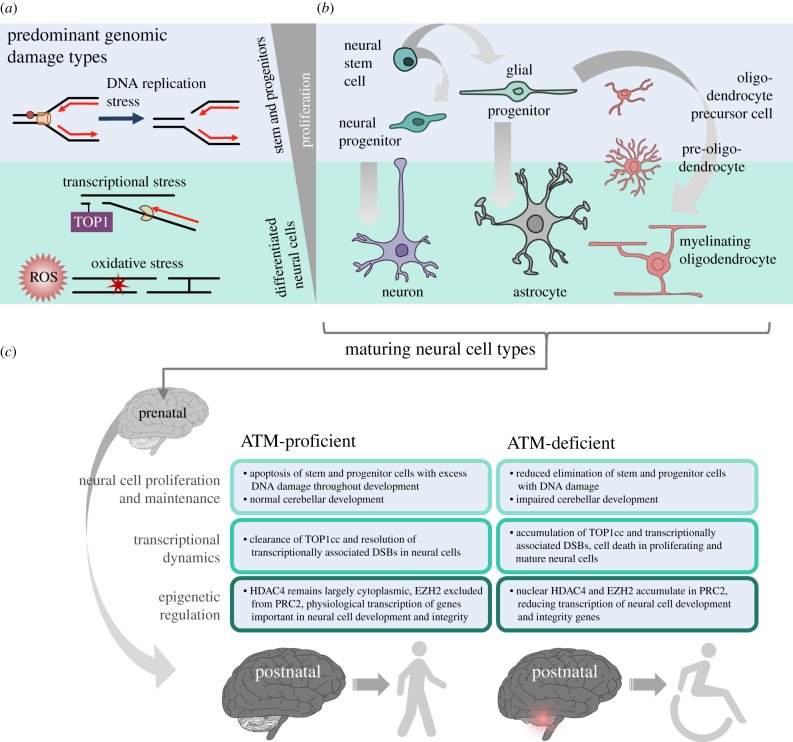Figure 3.
DNA damage repair in different neural cell types, and ATM-associated neurological phenotypes. (a) At different neurodevelopmental stages, cells encounter different sources of DNA damage: replication stress predominates in rapidly proliferating stem and progenitor cells, while genomic damage from high transcriptional load and ROS are predominant in post-mitotic neural cells. (b) Neurodevelopment involves proliferation, migration and differentiation of neural stem cells down multiple neural cell lineages. Neural stem cells generate neural progenitors that differentiate into neurons that populate the brain, primarily prenatally. Glial cells, including astrocytes and oligodendrocytes, are primarily formed in the early postnatal years from glial progenitor cells. (c) ATM mutation predisposes the cerebellum to rapid postnatal degeneration through defects in proliferation maintenance, transcriptional dynamics and epigenetic regulation which likely underlie the progressive ataxia observed in ataxia-telangiectasia patients. (Online version in colour.)

